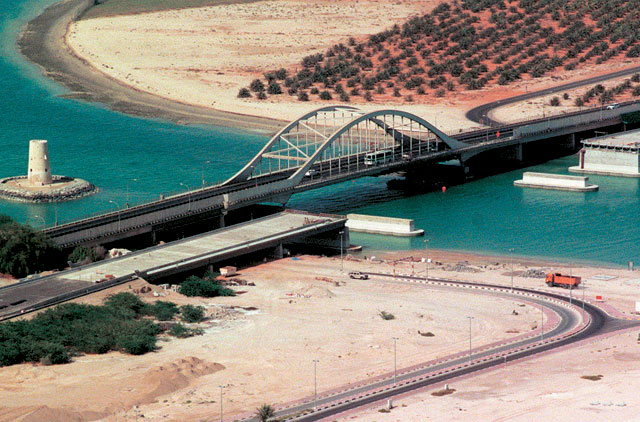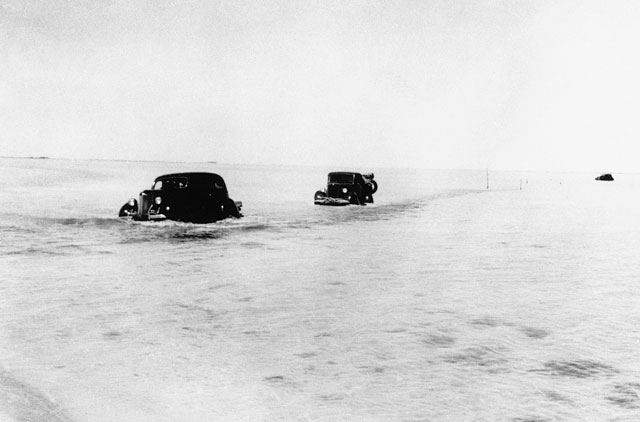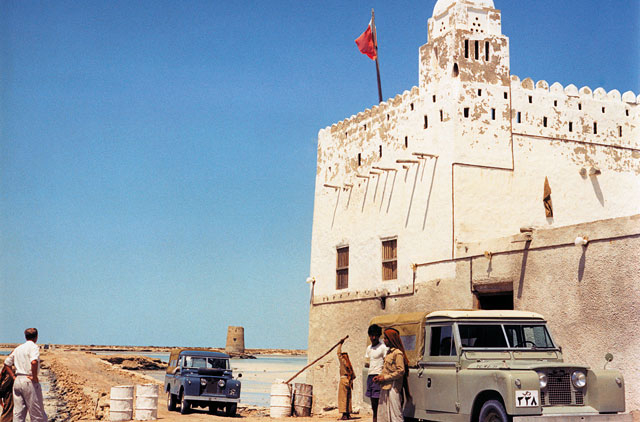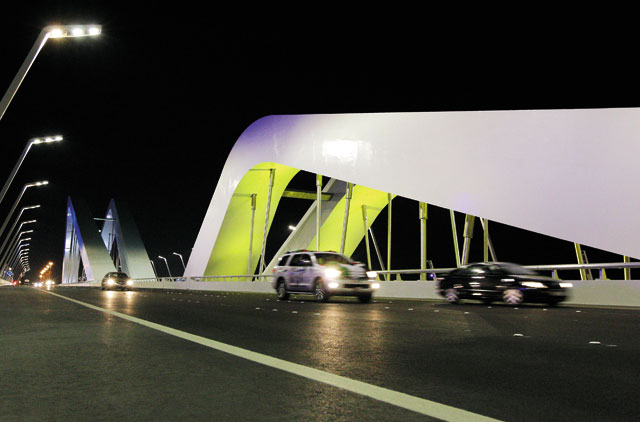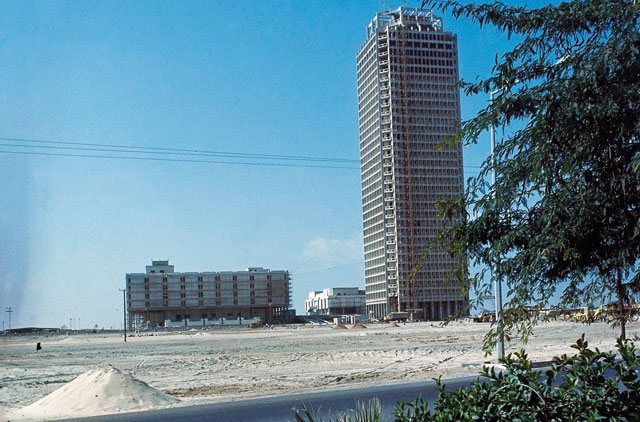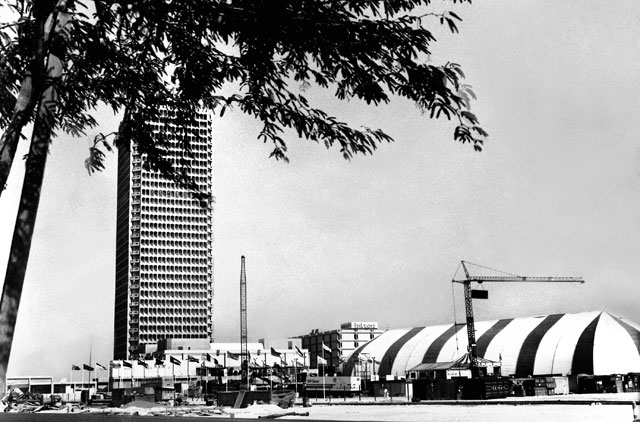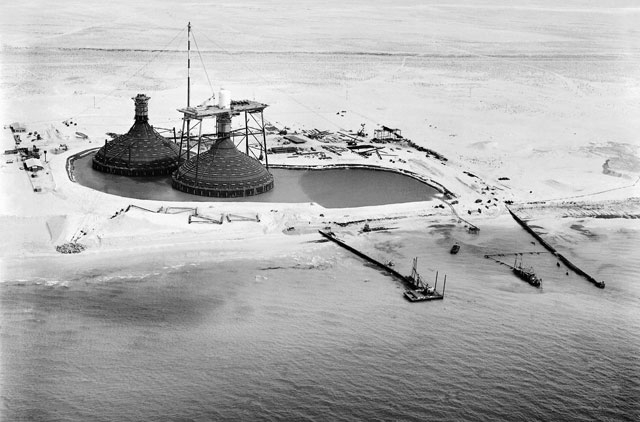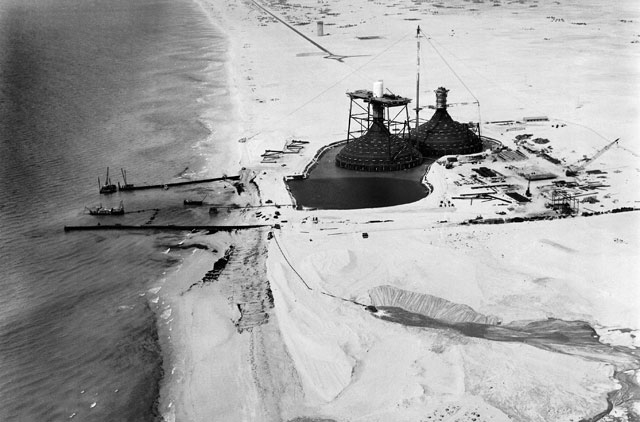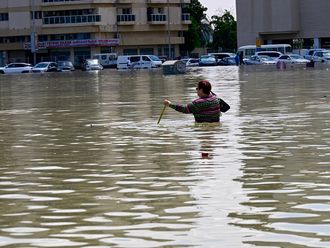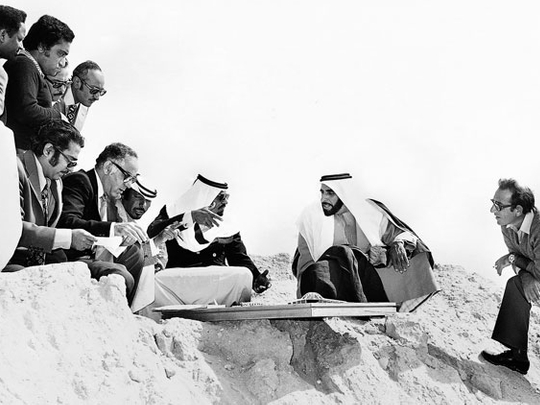
The Maqta Bridge
For centuries, getting across the narrow crossing from Abu Dhabi island to the mainland was subject to sea tides, making it both difficult and potentially hazardous. This is why in 1975 President Shaikh Zayed Bin Sultan Al Nahyan made it a priority to build a bridge over the crossing.
That bridge still exists, but the increase in volume of traffic required the bridge to be expanded; further growth in traffic volume required a new bridge, and the iconic Shaikh Zayed Bridge today runs alongside the Maqta Bridge. Nevertheless it is pleasing to see the old watchtower still in place, as it was all those decades ago. Although it no longer guards the approaches to Abu Dhabi, it is a welcome reminder of how far the UAE has come in a very short space of time.
Chicago Beach
In the 1960s, Dubai commissioned two vast tanks to store its crude oil as it came from the oil wells and waited to be loaded on to tankers for export. The tanks were built on shore and then floated out to sea and sunk, where they remain to this day, still performing the task.
The Chicago Bridge and Iron Company won the contract to build the huge tanks (khazzan in Arabic), which were 90 metres in diameter and 70 metres high. The gigantic onion-shaped structures were a major attraction among residents when they were being welded on site, a lonely stretch of beach miles up the coast from Jumeirah.
This stretch of sand became known locally as Chicago Beach, and later was the site of the Chicago Beach Hotel, which was very popular in the 1980s and 1990s even if it was far out of town. But the name vanished after the Chicago Beach Hotel was demolished in 1997 to make way for the Jumeirah Beach Hotel, and the offshore Burj Al Arab.
But the name lingered on with Chicago Beach Village, CBV, a residential complex next to the two hotels, which was built in the early 1970s for oil workers and had become a desirable residential complex. CBV was demolished in 2002 and the site was developed as the Madinat Jumeirah resort.
Today, the sole survivor in this saga is the pier which the Chicago Bridge and Iron Company built for its work (visible in these two pictures). The pier survived and was part of the CBV beach, used as a playground for thousands of young children from the compound. But today the pier has a much smarter purpose as the site of the award-winning seafood restaurant, Pierchic.
The Dubai World Trade Centre
Opened in 1978, the 149-metre high Dubai World Trade Centre comprising 39 storeys, made Dubai's first high-rise an outstanding landmark. Today, the Trade Centre has the Emirates Towers next door, Burj Khalifa down the road, and is surrounded by all the imposing buildings of Shaikh Zayed Road. As a result, it is hard to realise how prominent the building was in the 1980s and 1990s, but these pictures take us right back to when the Trade Centre was impossible to miss as Dubai's leading landmark. The Trade Centre has been linked to exhibitions right from the start. The massive halls of the Dubai International Convention and Exhibition Centre along Shaikh Zayed Road had its origins in a more modest tented structure which lasted into the 1980s.
All the pictures linked to this story are taken from Building a Nation, an exciting new book due to be published by Al Nisr Publishing to celebrate the extraordinary story of the UAE's 40 years.



